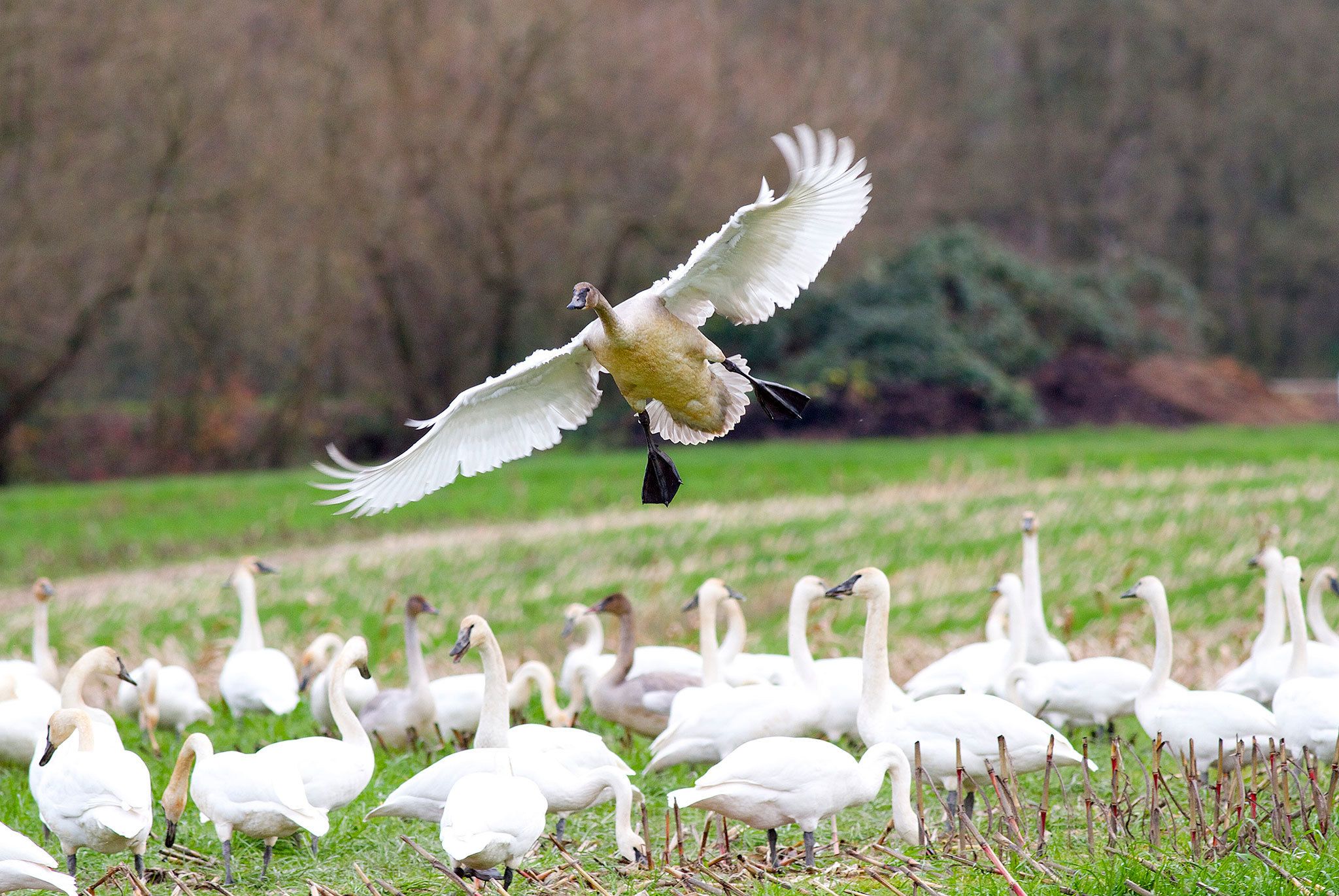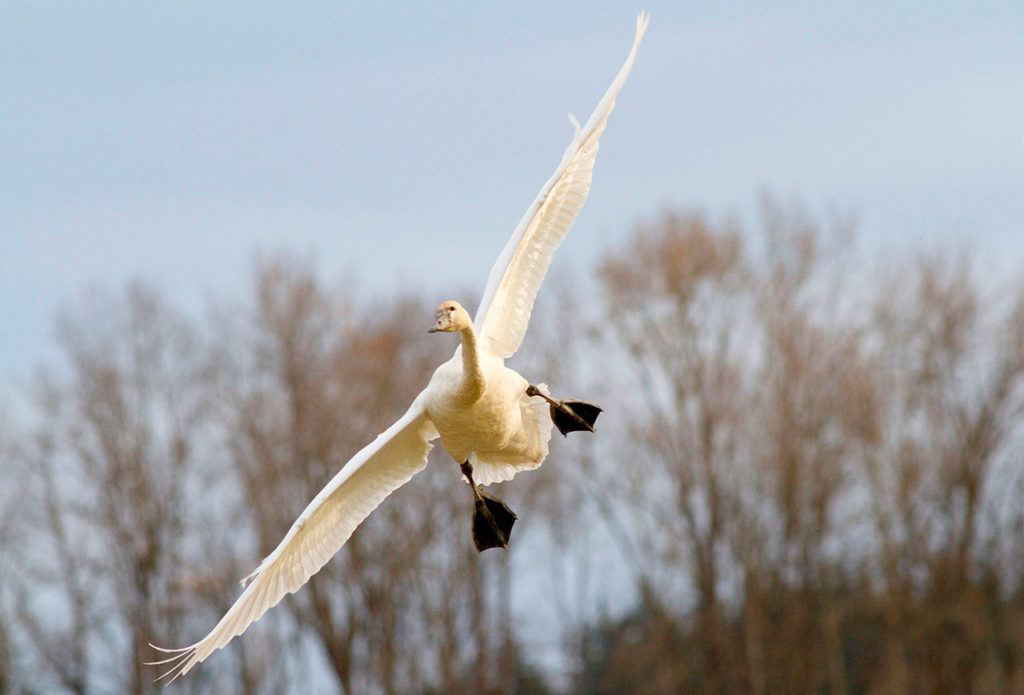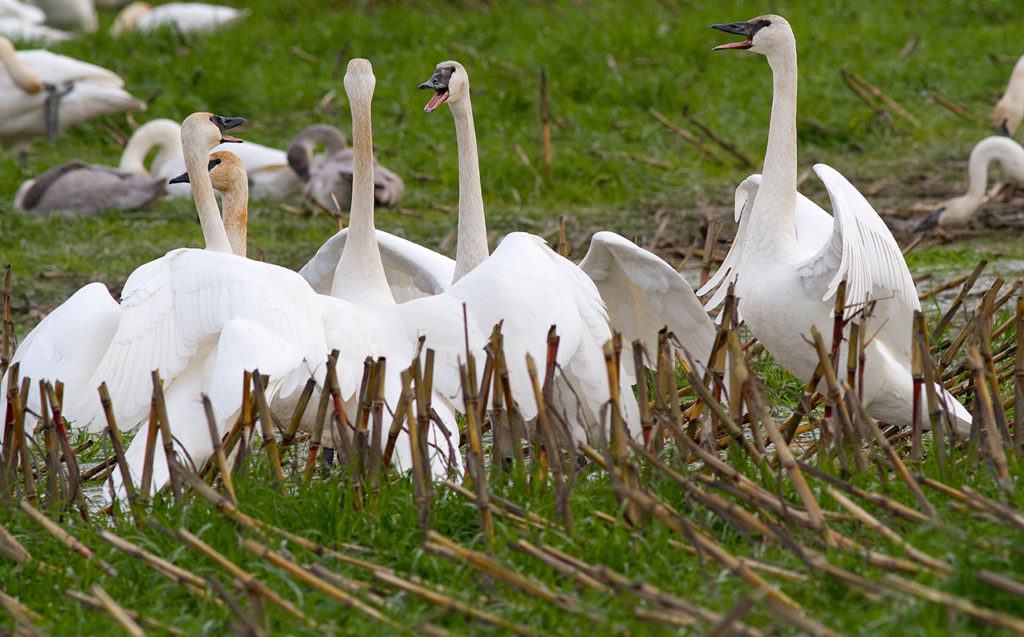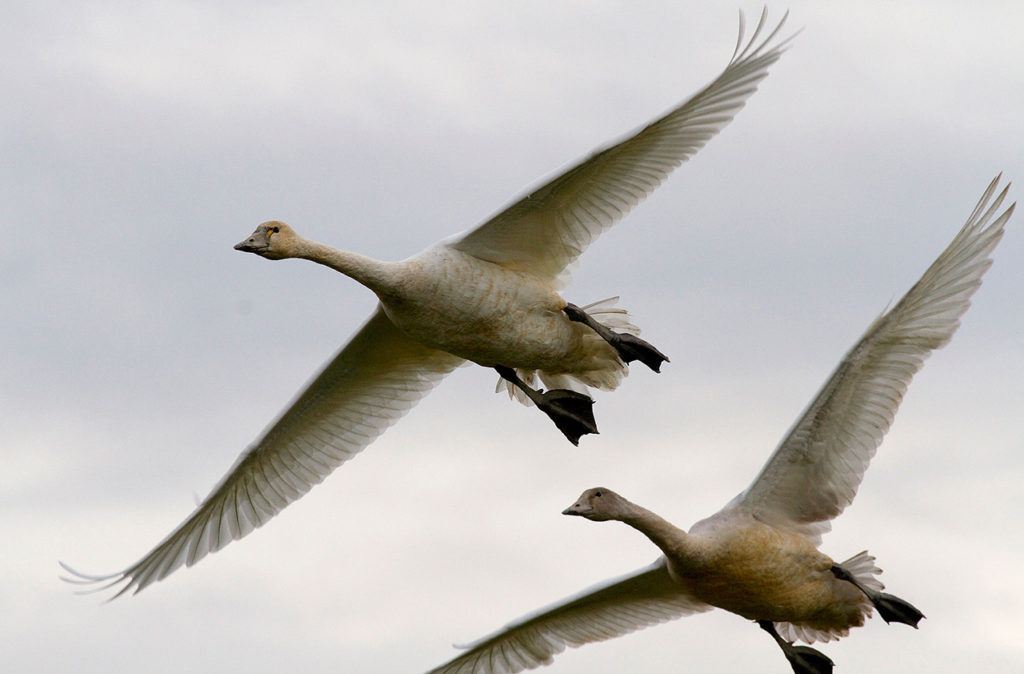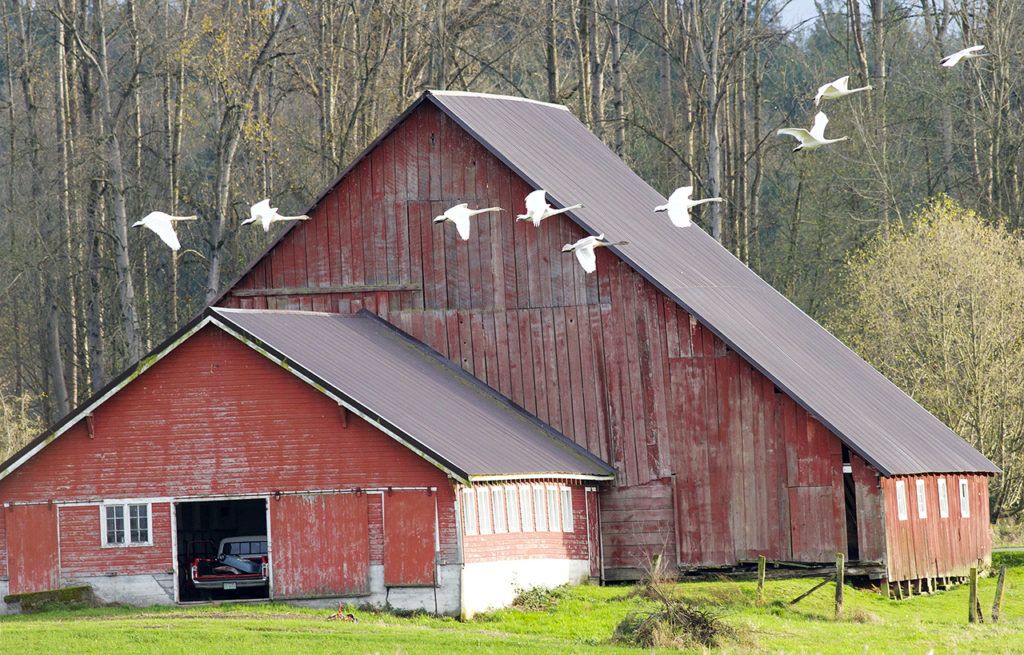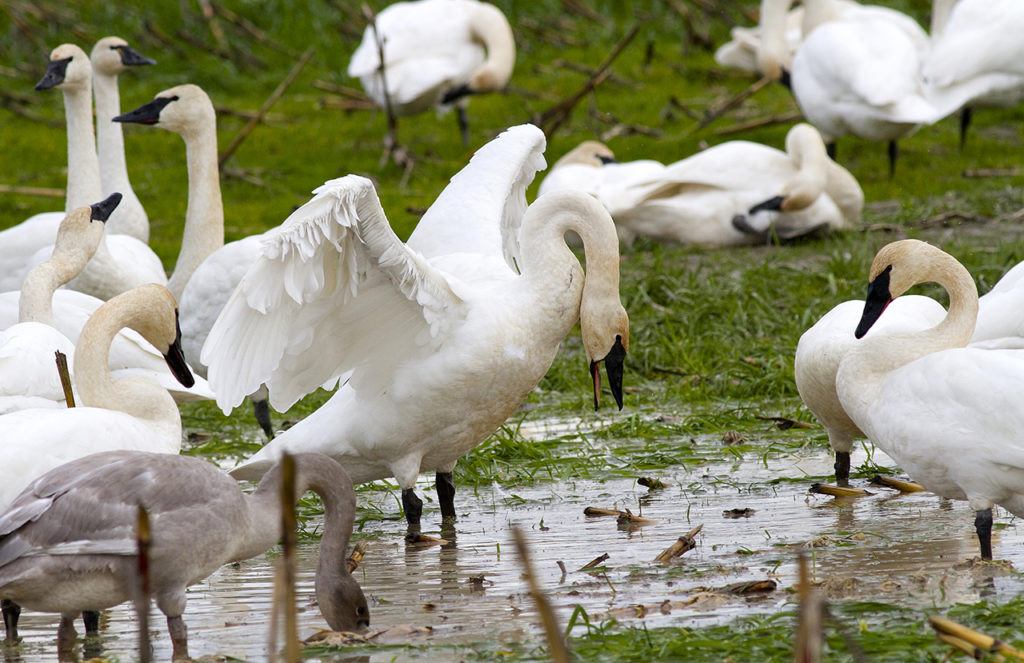They’re back.
Two of the Northwest’s most popular annual visitors, swans and snow geese, have arrived from the north — some from as far as thousands of miles away — to spend winter in Western Washington before heading back to raise their young.
The swans, the largest bird in North America, come with an interesting story. It’s a true comeback tale, thanks in part to dairy farmers in Snohomish, Skagit and Whatcom counties.
The modern writing pen fits in there somewhere, too.
Swans were hunted almost to extinction. Their feathers were considered the best source for quill pens. And at 30 pounds or so, trumpeter swans also made a substantial meal. According to the Cornell University bird lab, only 69 swans were known to exist in 1935, although more were believed to survive in remote parts of Alaska and Canada.
The Seattle Audubon Society notes that the numbers rose to 3,722 during a swan survey in 1968 and to 46,225 swans during the last count in 2010. More than half of that group, 26,800 swans, comprise the Pacific Coast population of trumpeter swans, most of which spend the winter in an area around the Skagit Valley.
While they’re far from extinction now, they still face problems with lost habitat, especially with the population growth in Western Washington, and with lead poisoning.
Lead shot has been outlawed for waterfowl hunting, but it’s still used for upland bird hunting. And there’s plenty of lead shot still in the soil. Swans are no longer hunted, but they wind up with lead in their bodies because they use shotgun pellets as grit to grind up their food. And as few as three lead pellets can kill a swan, according to Seattle Audubon.
As swan numbers have continued to grow, Snohomish County has also seen growing numbers of them feeding in the farms along the Stillaguamish and Snohomish river valleys. Many of the birds spend the night in Puget Sound or on a river or lake, then fly to farm fields in Stanwood, Silvana and Arlington or in Snohomish and Monroe.
John Morton, the supervisory biologist at the Kenai National Wildlife Refuge in Alaska, noted the birds like aquatic plants, but spend a lot of time foraging on rye grass and other crops planted by farmers for winter cover. Other experts have noted that swans and geese have become increasingly interested in potato and corn fields, and are spreading further around Snohomish County for their food.
The birds should stay in the Northwest into March. And watching them in local fields can be a great family activity. They’re surprisingly graceful in the air as they fly in close formation.
Remember that even with their comeback, swans are still a federally protected bird, and that it’s illegal to force them to fly away or to otherwise harass them.
Swan viewing tips
Stay in or near your car. Birds are used to seeing vehicles and generally aren’t threatened by them. If you see some birds, pull off the roadside and use your car as a blind to take photographs, if you like. A sack of beans from the supermarket can help steady your camera lens on the car window frame.
• Don’t slam the door, if you must leave your car. Close doors quietly and move slowly.
• Don’t trespass. Park your car in a safe spot off the road and stay out of farm fields.
• Leave your pets at home or in the car. The last thing you want to see or hear is your barking dog chasing a flock of trumpeters.
Where to view swans and geese:
Stanwood/Silvana
The farm fields around Silvana and south and north of Stanwood are my favorites because they’re close to where I live. That’s where, on clear days, I’ve found views of the Cascades for a nice background. I typically just drive around looking for birds.
Snohomish
The Bob Heirman Wildlife Preserve at Thomas’ Eddy offers a three-mile round trip hike and a chance to see swans and snow geese. The swans often spend the night at Shadow Lake here. From Snohomish, take Highway 9 south for 2.5 miles to Lowell-Larimer Road/Broadway. Turn left (east) on Broadway and go to Connelly Road, where you turn left again. It’s about 0.8 miles to the preserve.
Mount Vernon
The Northwest Swan Conservation Association recommends the Johnson-DeBay Swan Reserve near Mount Vernon. It’s part of the state’s Skagit Wildlife Area and Discover Passes are required. The association recommends that visitors take I-5 to the College Way exit in Mount Vernon and head east on College Way to LaVenture and turn left. The road drops into the valley and the speed changes to 50 miles an hour. From there it’s about three more miles to the reserve. Turn left on DeBay Isle Road and head to the gate to the reserve.
Talk to us
> Give us your news tips.
> Send us a letter to the editor.
> More Herald contact information.
